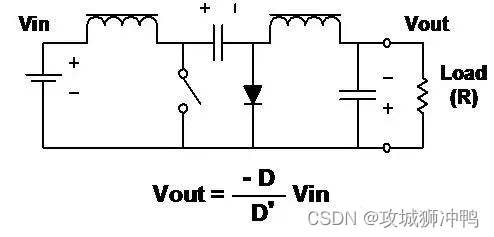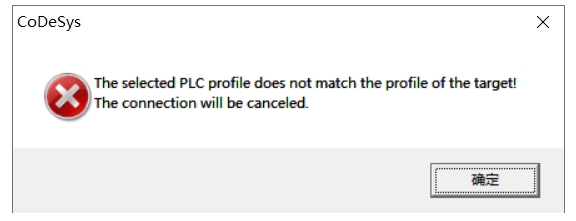当前位置:网站首页>[hard ten treasures] - 2 [basic knowledge] characteristics of various topological structures of switching power supply
[hard ten treasures] - 2 [basic knowledge] characteristics of various topological structures of switching power supply
2022-07-01 04:46:00 【Siege lion and duck】
List of articles
- 1、 Basic terms
- 2、Buck step-down
- 3、Boost boost
- 4、Buck-Boost step-down - boost
- 5、Flyback Flyback
- 6、Forward Forward excitation
- 7、Two-Transistor Forward Dual transistor forward
- 8、Push-Pull push-pull
- 9、Half-Bridge Half bridge
- 10、Full-Bridge Full bridge
- 11、SEPIC Single ended primary inductive converter
- 12、C’uk(Slobodan C’uk Patents )
- 13、 Details of circuit operation
- 14、Buck- Step down regulator - Continuous conduction
- 15、Buck- Step down regulator - Critical conductivity
- 16、Buck- Step down regulator - Discontinuous conduction
- 17、Boost Boost regulator
- 18、 Transformer operation ( Including the role of primary inductance )
- 19、 Flyback transformer
- 20、Forward Forward converter transformer
- 21、 summary
- Return directory 【 Hard ten treasures 】
1、 Basic terms
Common basic topologies
■ Buck step-down
■ Boost boost
■ Buck-Boost step-down - boost
■ Flyback Flyback
■ Forward Forward excitation
■ Two-Transistor Forward Dual transistor forward
■ Push-Pull push-pull
■ Half Bridge Half bridge
■ Full Bridge Full bridge
■ SEPIC
■ C’uk
Basic pulse width modulation waveform
These topologies are related to switching circuits .
The basic pulse width modulation waveform is defined as follows :
2、Buck step-down

characteristic
■ Reduce the input to a lower voltage .
■ Probably the simplest circuit .
■ inductance / The capacitor filter filters out the square wave after the switch .
■ The output is always less than or equal to the input .
■ The input current is discontinuous ( Chopping ).
■ The output current is smooth
3、Boost boost

** characteristic **
■ Raise the input to a higher voltage .
■ Same as depressurization , But rearranged the inductance 、 Switches and diodes .
■ The output ratio is always greater than or equal to the input ( Ignore the forward voltage drop of the diode ).
■ Input current is smooth .
■ The output current is discontinuous ( Chopping ).
4、Buck-Boost step-down - boost

characteristic
■ inductance 、 Another arrangement of switches and diodes .
■ It combines the disadvantages of step-down and step-up circuits .
■ The input current is discontinuous ( Chopping ).
■ The output current is also discontinuous ( Chopping ).
■ The output is always opposite to the input ( Pay attention to the polarity of the capacitor ), However, the amplitude can be less than or greater than the input .
■ “ Flyback ” The converter is actually buck - Boost circuit isolation ( Transformer coupling ) form .
5、Flyback Flyback

characteristic
■ Such as reducing blood pressure - The boost circuit works the same , But the inductor has two windings , And as both transformer and inductor .
■ The output can be positive or negative , Determined by the polarity of the coil and diode .
■ The output voltage can be greater than or less than the input voltage , Determined by the turns ratio of the transformer .
■ This is the simplest of the isolated topologies
■ Multiple outputs can be obtained by adding secondary windings and circuits .
6、Forward Forward excitation

characteristic
■ Transformer coupling form of step-down circuit .
■ Discontinuous input current , Smooth output current .
■ Because of the transformer , The output can be greater or less than the input , It can be any polarity .
■ Multiple outputs can be obtained by adding secondary windings and circuits .
■ The transformer core must be demagnetized in each switching cycle . The common practice is to add a winding with the same number of turns as the primary winding .
■ The energy stored in the primary inductor during the switch on phase , During the switch off phase, it is released through another winding and diode .
7、Two-Transistor Forward Dual transistor forward

characteristic
■ Both switches work at the same time .
■ When the switch is off , The energy stored in the transformer reverses the polarity of the primary , Turn on the diode .
The main advantages :
■ The voltage on each switch will never exceed the input voltage .
■ There is no need to reset the winding track .
8、Push-Pull push-pull

characteristic
■ switch (FET) The driving phases are different , Pulse width modulation (PWM) To adjust the output voltage .
■ Good transformer core utilization — Power is transmitted in both half cycles .
■ Full wave topology , Therefore, the output ripple frequency is twice the frequency of the transformer .
■ Imposed on FET The voltage on the is twice the input voltage .
9、Half-Bridge Half bridge

characteristic
■ High power converters are very common topologies .
■ switch (FET) The driving phases are different , Pulse width modulation (PWM) To adjust the output voltage .
■ Good transformer core utilization — Power is transmitted in both half cycles . Moreover, the utilization rate of primary winding is better than that of push-pull circuit .
■ Full wave topology , Therefore, the output ripple frequency is twice the frequency of the transformer .
■ Imposed on FET The voltage on the is equal to the input voltage .
10、Full-Bridge Full bridge

characteristic
■ Higher power converters are the most commonly used topology .
■ switch (FET) Drive in the form of diagonal pairs , Pulse width modulation (PWM) To adjust the output voltage .
■ Good transformer core utilization — Power is transmitted in both half cycles .
■ Full wave topology , Therefore, the output ripple frequency is twice the frequency of the transformer .
■ Imposed on FETs The voltage on the is equal to the input voltage .
■ At a given power , The primary current is half that of the half bridge .
11、SEPIC Single ended primary inductive converter

characteristic
■ The output voltage can be greater than or less than the input voltage .
■ Same as boost circuit , Input current is smooth , But the output current is discontinuous .
■ Energy is transferred from the input to the output through a capacitor .
■ Need two inductors .
12、C’uk(Slobodan C’uk Patents )

characteristic
■ Output inverting
■ The amplitude of the output voltage can be greater or less than the input voltage .
■ The input current and output current are smooth .
■ Energy is transferred from the input to the output through a capacitor .
■ Need two inductors .
■ Inductors can be coupled to obtain zero ripple inductor current .
13、 Details of circuit operation
The following explains the working details of several topologies
■ Step down regulator :
Continuous conduction
Critical conductivity
Discontinuous conduction
■ Boost regulator ( Continuous conduction )
Transformer operation
Flyback transformer
Forward transformer
14、Buck- Step down regulator - Continuous conduction

characteristic
■ The inductive current is continuous .
■ Vout Is its input voltage (V1) The average of .
■ The output voltage is the input voltage multiplied by the load ratio of the switch (D).
■ On , Inductive current flows out of the battery .
■ When the switch is off, current flows through the diode .
■ Ignore losses in switches and inductors , D Independent of load current .
The characteristics of the step-down regulator and its derived circuit are :
■ The input current is discontinuous ( Chopping ), The output current is continuous ( smooth ).
15、Buck- Step down regulator - Critical conductivity

■ The inductive current is still continuous , Only when the switch is turned on again “ achieve ” zero .
This is known as “ Critical conductivity ”.
The output voltage is still equal to the input voltage multiplied by D.
16、Buck- Step down regulator - Discontinuous conduction

■ under these circumstances , The current in the inductor is zero for a period of time in each cycle .
■ The output voltage remains ( Throughout ) yes v1 Average value .
■ The output voltage is not the input voltage multiplied by the load ratio of the switch (D).
■ When the load current is below the critical value ,D Varies with load current ( and Vout remain unchanged ).
17、Boost Boost regulator

■ The output voltage is always greater than ( Or equal to ) Input voltage .
■ The input current is continuous , The output current is discontinuous ( As opposed to the step-down regulator ).
■ Output voltage to load ratio (D) The relationship is not as simple as in the step-down regulator . In the case of continuous conduction :
V o = V i n ( 1 1 − D ) Vo =Vin ( \frac {1} {1-D}) Vo=Vin(1−D1)
In this case ,Vin = 5,Vout = 15,and D = 2/3,Vout = 15,D = 2/3.
18、 Transformer operation ( Including the role of primary inductance )

■ The transformer is regarded as an ideal transformer , Its primary ( magnetization ) The inductor is connected in parallel with the primary .
19、 Flyback transformer

■ The primary inductance here is very low , Used to determine peak current and stored energy . When the primary switch is off , Energy is transferred to the secondary .
20、Forward Forward converter transformer

■ The primary inductance is very high , Because there is no need to store energy .
■ Magnetizing current (i1) inflows “ Magnetizing inductance ”, Demagnetize the magnetic core after the primary switch is disconnected ( The voltage is reversed ).
21、 summary
■ The most common circuit topologies in switching mode power supply conversion are reviewed here .
■ There are also many topologies , But most of them are combinations or deformations of the topologies described here .
■ Each topology contains unique design tradeoffs :
The voltage applied to the switch
Chopping and smoothing input and output current
Utilization of windings
■ Choosing the best topology requires research :
Input and output voltage range
Current range
Cost and performance 、 The ratio of size to weight
Return directory 【 Hard ten treasures 】
边栏推荐
- 2022 gas examination question bank and online simulation examination
- The design points of voice dialogue system and the importance of multi round dialogue
- 最长递增子序列及最优解、动物总重量问题
- 【FTP】FTP连接时出现“227 Entering Passive Mode”的解决方法
- LeetCode_53(最大子数组和)
- Common methods in transforms
- [pat (basic level) practice] - [simple simulation] 1064 friends
- LeetCode_ 66 (plus one)
- 分布式-总结列表
- Basic usage, principle and details of session
猜你喜欢

Openresty rewrites the location of 302

The longest increasing subsequence and its optimal solution, total animal weight problem

Dual contractual learning: text classification via label aware data augmentation reading notes

LM小型可编程控制器软件(基于CoDeSys)笔记十九:报错does not match the profile of the target

2022 question bank and answers for safety production management personnel of hazardous chemical production units

分布式全局唯一ID解决方案详解

Extension fragment

Applications and features of VR online exhibition

Use of dataloader

分布式-总结列表
随机推荐
VIM easy to use tutorial
How to do the performance pressure test of "Health Code"
Daily algorithm & interview questions, 28 days of special training in large factories - the 13th day (array)
Pytoch (I) -- basic grammar
The index is invalid
解决:Thread 1:[<*>setValue:forUndefinedKey]:this class is not key value coding-compliant for the key *
【FTP】FTP连接时出现“227 Entering Passive Mode”的解决方法
Some tools that research dogs may need
All in all, the low code still needs to solve these four problems
C read / write application configuration file app exe. Config and display it on the interface
Codeworks round 449 (Div. 1) C. Kodori tree template
线程类的几大创建方法
LeetCode_58(最后一个单词的长度)
Summary of testing experience - Testing Theory
Overview of the construction details of Meizhou veterinary laboratory
Codeforces Round #771 (Div. 2) ABCD|E
Fitness without equipment
神经网络-卷积层
[pat (basic level) practice] - [simple simulation] 1064 friends
C - detailed explanation of operators and summary of use cases